Publications
New phase transition in a 2D titanium carbide MXene: possible sliding ferroelectricity - A new paper
MXene consists of metallic layers, that can easily slide with respect to each other like sheets in reams. A phase transition has been revealed measuring the elastic modulus of films. It should be a new type of ferroelectricity found in bilayers of other 2D materials, where a polarization is generated between the layers sliding with respect to each other. The sliding ferroelectricity is studied with sophisticated techniques at the nanoscale and promises exceptional improvements in ferroelectric memories and Nanoelectronics, but we simply measured the Young’s modulus of a thick film.
A fresh perspective for organic monolayers on silicon: new paper
The controlled formation of stable ordered monolayers of N-heterocyclic olefins on a surface has been demonstrated for the first time. This exciting new multidisciplinary work, performed by CNR-ISM theoreticians in collaboration with Italian (University of Rome "Tor Vergata") and German (University of Münster and Technical University of Berlin) surface physicists and organic chemists, has been published in Angewandte Chemie.
Improved reuse and storage performances at room temperature of a new environmentally friendly lactate oxidase biosensor prepared by ambient electrospray immobilization
A new, environmentally friendly lactate oxidase (LOX) based biosensor for lactate detection, with unprecedented reuse and storage capabilities at room temperature, has been manufactured using the ambient electrospray deposition (ESD) technique. This technology allows for an efficient, green and easy ambient soft-landing immobilization of the LOX enzyme on a cheap commercial screen-printed Prussian blue/carbon electrode (PB/C-SPE), employing sustainable chemistry.
Unravelling the spin-texture of topological antimonene, a new paper
The CNR-ISM researchers led a joint work of Italian (CNR-IOM, University of Tor Vergata, Sincrotrone Trieste and ICTP), Slovenian (University of Nova Gorica) and German (Forschungszentrum Jülich and JARA) institutions, which highlights and explains the origin of the nearly full out-of-plane spin polarization of the two-dimensional antimonene interfaced with a topological insulator, thus opening new perspectives for spintronic applications. The article was published in NanoLetters.
The struggle of dipeptides for Life - A new paper
The understanding of the response of organic molecules to ionising radiation and their evolution towards proteins and enzymes is a key question in astrochemistry and astrobiology. Cyclic dipeptides, obtained by forming two peptide bonds between two amino acids, may have played an important role in the evolution of life, by developing both survival strategies and smart reactive mechanisms for peptide synthesis.
These are the results expressed in the new article published as 'Hot Article' on Physical Chemistry Chemical Physics (PCCP).
Elastic precursor effects during the Ba1-xSrxTiO3 ferroelastic phase transitions
“Elastic precursor effects during the Ba1-xSrxTiO3 ferroelastic phase transitions”, published in Physical Review Research, is the result of a collaboration between ISM-CNR, Cambridge Earth Sciences (Cambridge University - England), Federal University of São Carlos (UFSCar - Brazil) and Xi’an Jiaotong University (China).
The elastic softening in the paraelastic/paraelectric phases of Ba1-xSrxTiO3 extends to the highest measured temperature (850 K) for Ba-rich compounds and can be fitted with a power law (T-Tc)^k where k ranges between 1.5 in SrTiO3 and 0.2 in BaTiO3. An alternative Vogel-Fulcher type analysis is also considered. The amplitude of the precursor softening increases continuously from SrTiO3 to BaTiO3 and is still 33% of the unsoftened Young’s modulus at 750 K in BaTiO3. This proves that the high temperature elastic properties of these materials are drastically affected by precursor softening.
Thin-film heterostructures based on Co/Ni synthetic antiferromagnets on polymer tapes: toward sustainable flexible spintronics
In a new paper published on ACS Applied Materials and Interfaces journal, an international team of researchers demonstrated for the first time that complex and bendable Co/Ni-based heterostructures with a reduced content of critical Pt group metals can be obtained on flexible tapes, allowing for the development of novel flexible and sustainable spintronic devices for applications in many fields including wearable electronics, robotics, and biomedicine.
Photoluminescence and efficiency in perovskite solar cells
The paper "Re‐evaluation of Photoluminescence Intensity as an Indicator of Efficiency in Perovskite Solar Cells" has been published in the Solar RRL journal. It is the outcome of a collaboration between EFSL (EuroFEL Support Laboratory - ISM), CNR-IMM (Istituto per la Microelettronica e i Microsistemi) and CHOSE (Centre for Hybrid and Organic Solar Energy – Regione Lazio) researchers: Valerio Campanari, Faustino Martelli, Antonio Agresti, Sara Pescetelli, Narges Yaghoobi Nia, Francesco Di Giacomo, Daniele Catone, Patrick O'Keeffe, Stefano Turchini, Bowen Yang, Jiajia Suo, Anders Hagfeldt and Aldo Di Carlo.
#perovskite #solar #photoluminescence #efficiency
The first third-generation solar park based on bidimensional materials shines in terms of performance
The solar park built on the island of Crete uses technologies developed by italian researchers in the context of European Graphene Flagship initiative.
The third-generation panels in which silicon is replaced by perovskite, graphene and other bidimensional materials, demonstrate a high commercial and sustainability potential.
The results have been published in Nature Energy.
#graphene #solar_cell #perovskite #materialbidimensional
Acoustic Vibration Modes of Gold–Silver Core–Shell Nanoparticles
The EFSL research group, in collaboration with the Laboratoire Lumière, Matière et Interfaces and the Laboratoire de Physique des Solides of Université Paris-Saclay (France) and with the Institut des Molécules et Matériaux du Mans of Le Mans Université, has published a paper in the Special Issue "Photonics and Plasmonics: New Challenges for Optical Nanostructured Materials" of the Chemosensors journal. The title of the article is "Acoustic Vibration Modes of Gold–Silver Core–Shell Nanoparticles".
#ultrafast #plasmonics #Nanoparticles
More...
A new material increases the production of "green" hydrogen from biomass
A newly synthesized nanomaterial is able to increase the production of green hydrogen from biomass through the photoreforming process, which exploits sunlight to "extract" hydrogen from green waste with the help of a catalyst, in this case a new photo-catalyst based on titanium dioxide. This is the result of a recent collaboration between the University of Trieste, ICCOM-CNR, Czech Advanced Technology and Research Institute of Olomouc and ISM-CNR (Elettra Sincrotrone Trieste).
A study published in Chem Catalysis.
#greenhydrogen #photoreforming #titaniumdioxide
First demonstration of a 3-terminal thermionic-photovoltaic hybrid device
The paper that demonstrates for the first time the operations of a 3-terminal hybrid thermionic-photovoltaic device at very high temperatures for the conversion of thermal energy into electrical energy has been published in the journal Advanced Energy Materials. The converter is characterized by a common terminal and a thermophotovoltaic cell which also functions as a thermionic anode.
#openaccess #energy #sustainability #solarconversion
Fabrication of a New, Low-Cost, and Environment-Friendly Laccase-Based Biosensor by Electrospray Immobilization with Unprecedented Reuse and Storage Performances
The CNR-ISM together with other Institutes such as ISMN, IGAG and IMAA and with the participation of Sapienza University of Rome and the University of Foggia, has developed a new eco-sustainable technology to produce enzymatic biosensors, which show unprecedented performance in terms of storage and working stability.
Article published on American Chemical Society (ACS), Sustainable Chemistry and Engineering
#biosensor #laccase #electrospray #deposition #immobilization #ecofriendly #green #storage #reuse
Selective Effects of the Host Matrix in Hydrogenated InGaAsN Alloys: Toward an Integrated Matrix/Defect Engineering Paradigm
Article published on Advanced Functional Material.
In dilute nitride InyGa1−yAs1−xNx alloys, a spatially controlled tuning of the energy gap can be realized by combining the introduction of N atoms—inducing a significant reduction of this parameter—with that of hydrogen atoms, which neutralize the effect of N. In these alloys, hydrogen forms N–H complexes in both Ga-rich and In-rich N environments.
Here, photoluminescence measurements and thermal annealing treatments show that, surprisingly, N neutralization by H is significantly inhibited when the number of In-N bonds increases. Density functional theory calculations account for this result and reveal an original, physical phenomenon.
#dilute_nitride_alloys #density_functional_theory

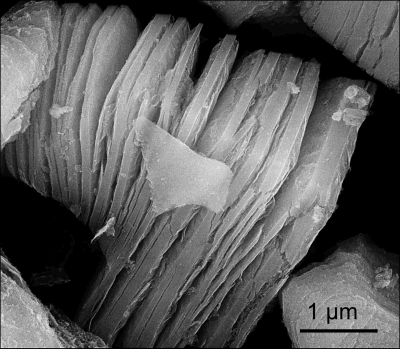
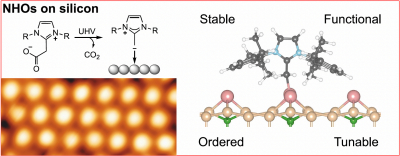
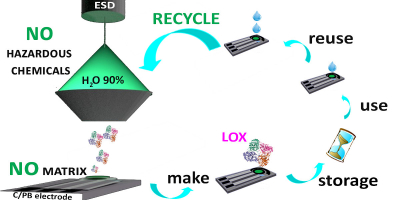
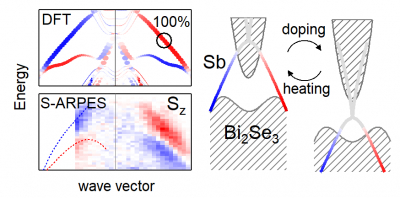
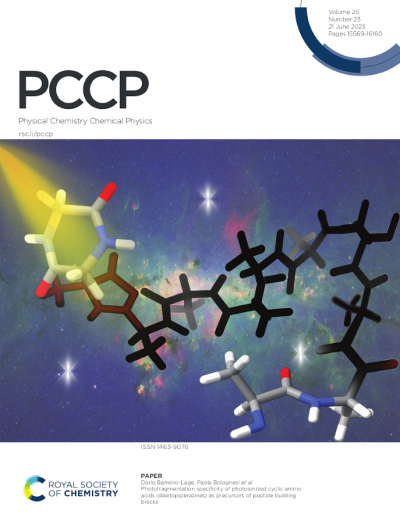
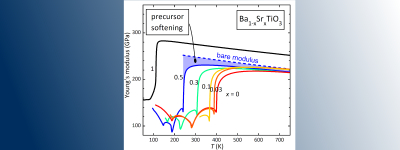








 English (UK)
English (UK)  Italiano (Italia)
Italiano (Italia)